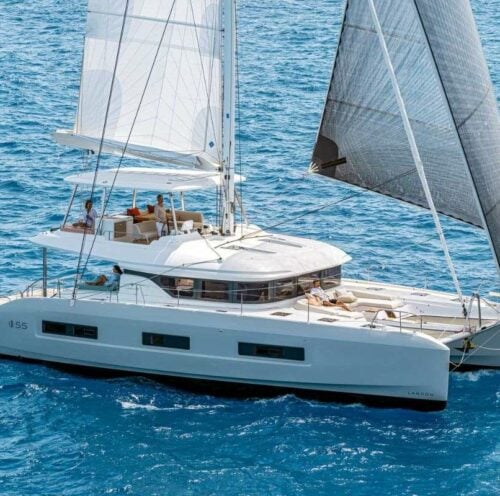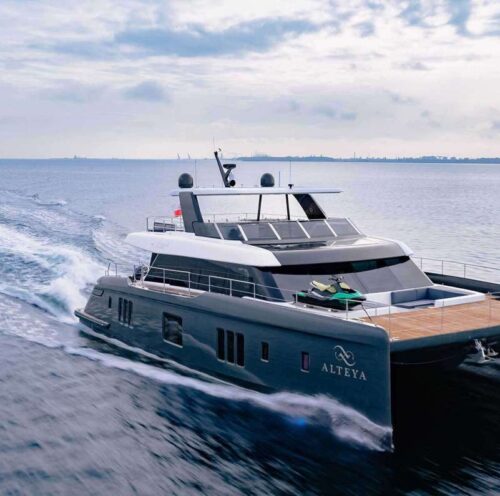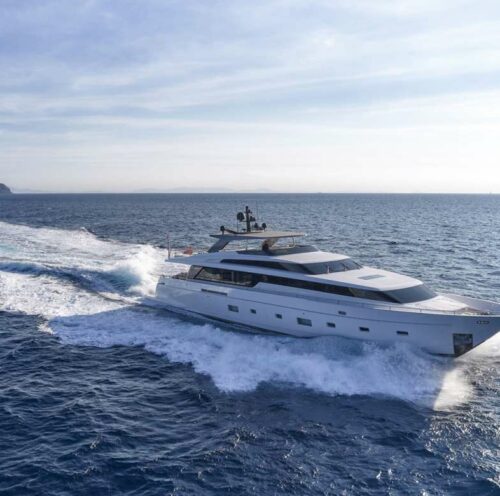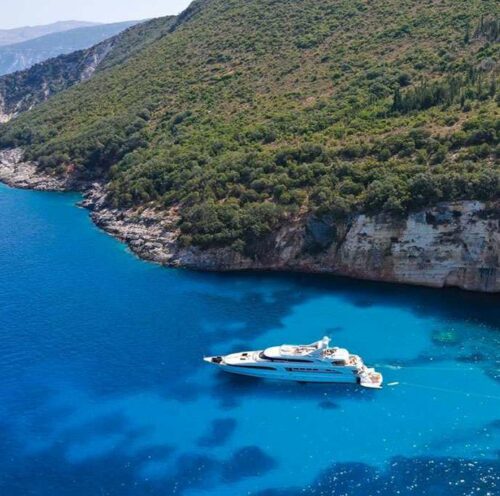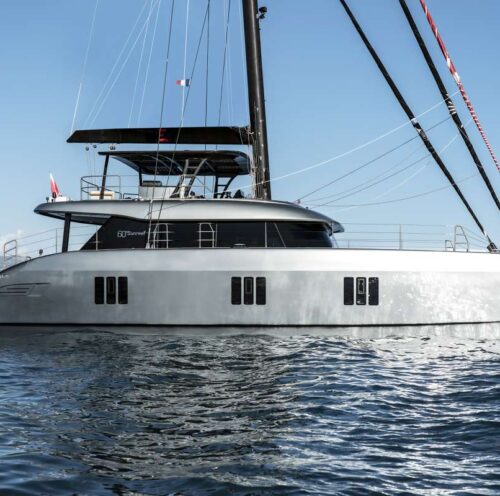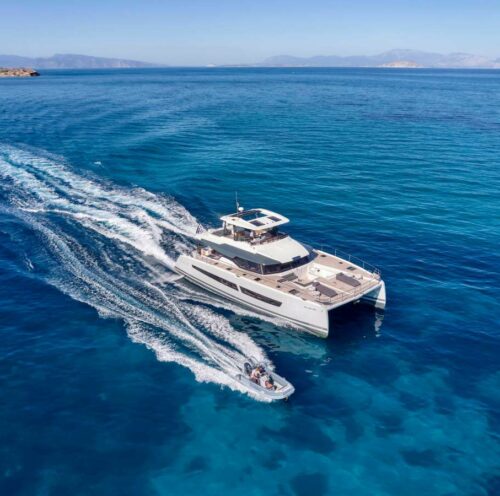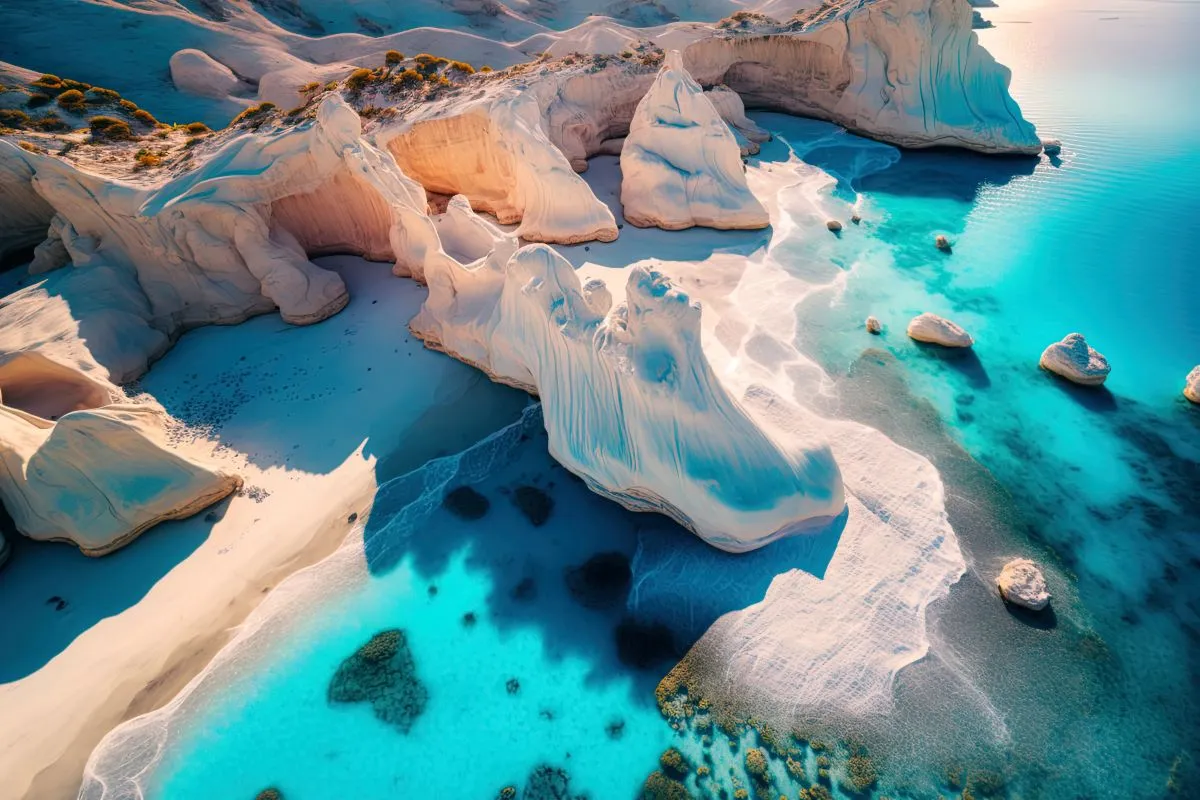
Milos | Natural Beauty and History
The volcanic Milos is the most southwestern of the Cyclades and also includes uninhabited Antimilos and Akradies. This island is most famous for the statue of Aphrodite, the “Venus de Milo,” which now permanently resides in the Louvre in Paris. However, a replica is in the Archaeological Museum in Plaka.
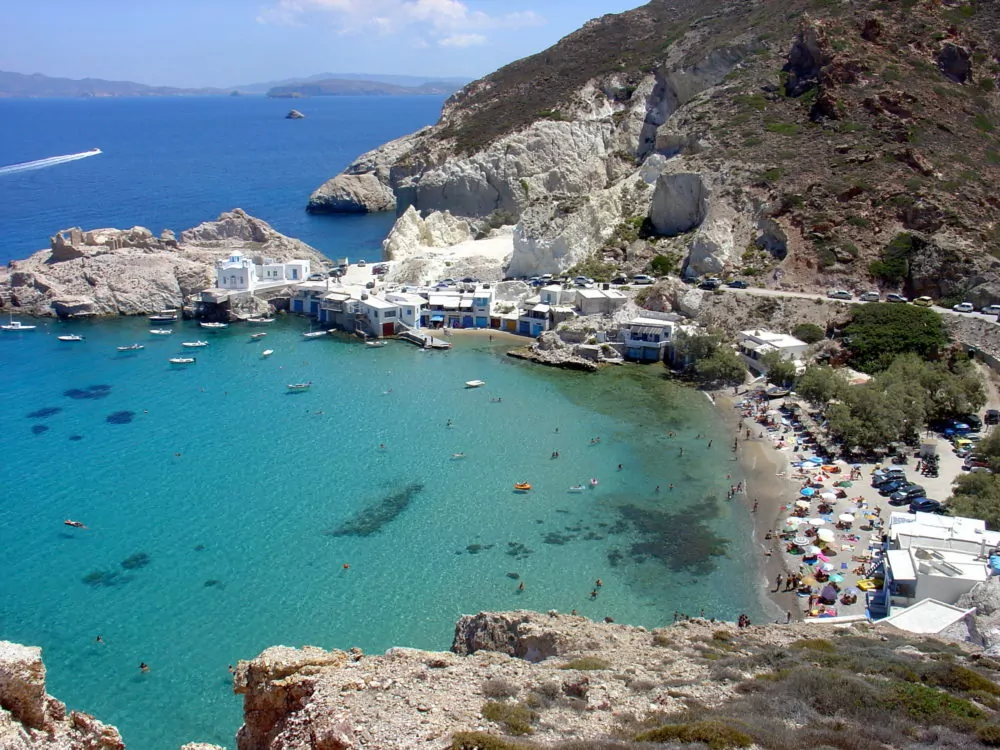
But beyond its historical treasures, the island is a captivating place of striking contrasts—white rock formations that meet turquoise seas, colorful fishing villages, secluded beaches, and a raw, untouched charm that distinguishes it from the more polished neighboring islands.
Climate in Milos
Milos has a Mediterranean climate with mild, rainy winters and also warm to hot, dry summers. July is typically the hottest month, with average temperatures around 25.5°C (78°F), perfect for beach outings and outdoor exploration. Winters are cool but rarely harsh, with January averaging around 10.5°C (51°F), making it a possible year-round destination for those seeking tranquility off-season.
Places to see on Milos
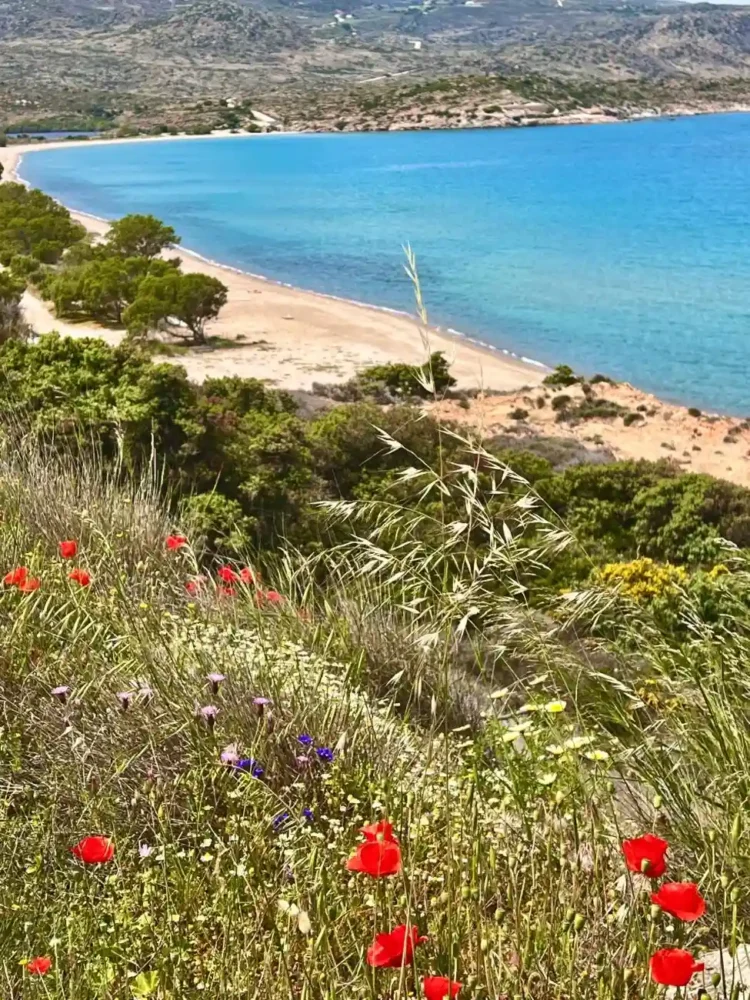
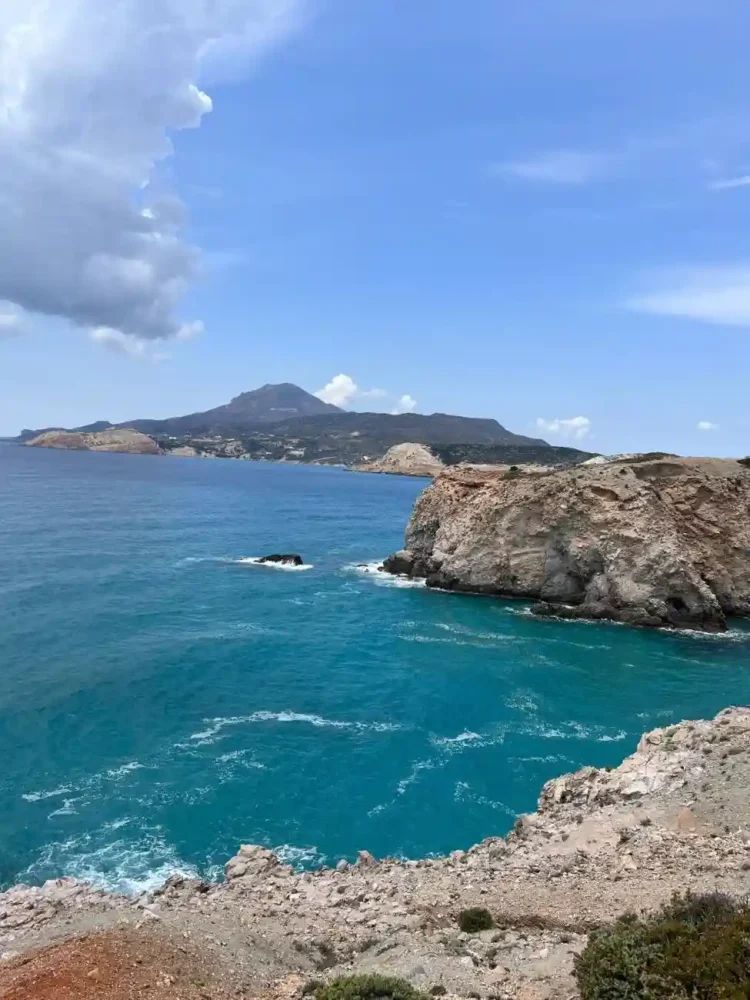
- Plaka, the capital, along with Klima, Pollonia, and Adamas (the port), showcase traditional Cycladic architecture.
- Milos’ Catacombs. The 1st-century catacombs were used as cemeteries and churches when Rome persecuted Christians. Archaeologists believe that thousands of Christians are buried here.
- Ancient Theatre of Milos. Located near the catacombs and close to Tripiti. Critical historical monuments like this are usually off-limits to the public. However, here, you’ll be able to explore and admire the view freely.
- Old Sulphur Mines are on the island’s east side of Paliorema Beach. Arcades, iron bridges, train tracks with wagons, tunnels, carriages, and old stone homes give an idea of how this unit worked up until 1956.
- The island’s caves include Papafrangas, Sykia, and Kleftiko. All of them have stunning white rock formations. Sykia is only accessible by boat through an arched entrance since the ceiling has partially collapsed.
- The Archaeological Museum in Plaka. Its collections include exhibits dating from the Late Neolithic to the Byzantine period.
Things to do on Milos
Dive and Snorkel
Many underwater caves, rich marine life, rocky islets, and also wrecks from WWII provide excellent diving and snorkeling spots.
Fishing
Fish such as the huge Bluefin Tuna are abundant in the surrounding saltwater sea. Head out with a local fishing guide for the best chance of landing the big one.
Go to the Beach
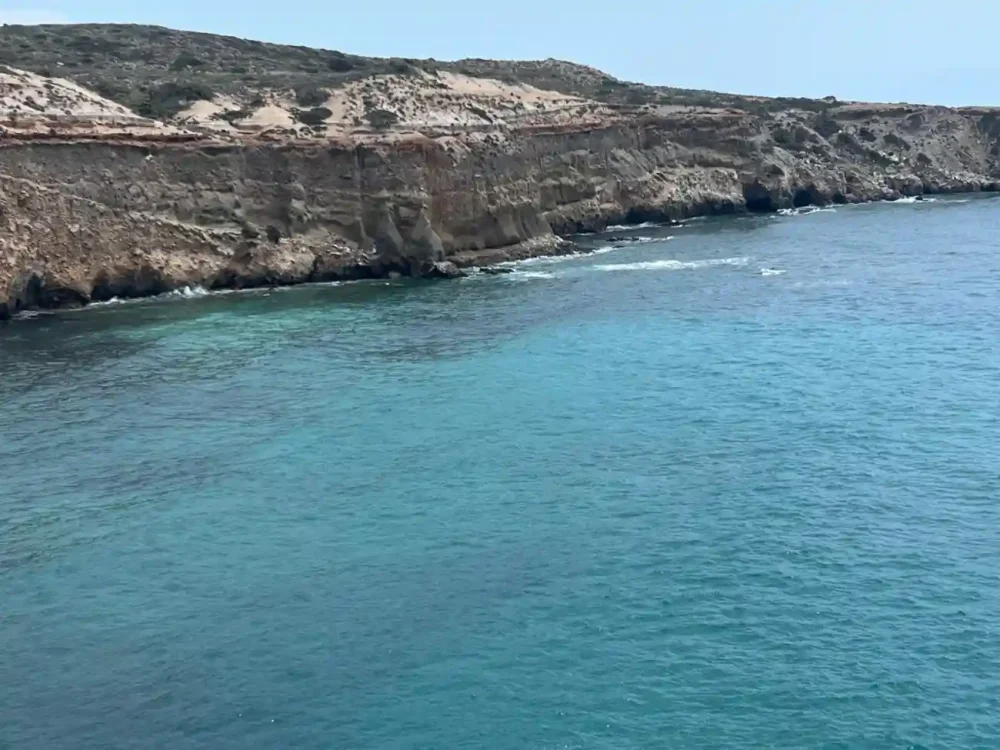
Sarakiniko is the most famous beach and also one of the most often photographed landscapes in the Aegean. Moreover, Paleochori, Agia Kyriaki, Firiplaka, and Tsigrado are other attractive beaches worth visiting.
Windsurf and Kite Surf
The most famous wind and kite surfing site is Achivadolimni Beach. It has shallow water and perfect onshore winds. There is an organized windsurfing center at Papkino, a beach close to the port of Adamas.
Mountain Bike
The excellent network of dirt roads makes Milos the perfect environment for the biking enthusiast.
Geo-Tourism
Its volcanic origin offers rare geological beauty. For example, Sarakiniko, the Cave of Papafragas, and two volcano craters provide insight into the island’s geological history.
Kayak
It is a special treat to discover the impressive coastline and also the sea caves of Milos in a kayak. Guided tours are available.
Soak in Thermal Hot Springs
Milos is blessed with numerous thermal springs, known for their healing qualities since antiquity. You can find these springs on the beaches of Alikes, Kanava, Provatas, Paliohori, Skinopi, and also Tria Pigadia.
Rock Climb
There are two climbing fields on Milos. The Akrotiri Vani, a huge cone-shaped rock, and the Glaronisia are considered among the best in Greece.
Take Part in a Festival
Feasts on Milos always include traditional music, dances, local wine, and delicacies, and usually take place on church grounds during the summer months.
Gastronomy on Milos
Milos’ volcanic soil and surrounding seas create a fertile foundation for an exceptional culinary scene rooted in tradition and local ingredients. The island’s cuisine is hearty, flavorful, and also distinctly Cycladic.
Start your culinary journey with classic Greek favorites like moussaka, grilled lamb or pork, and also baked or sun-dried octopus, a local specialty served in many seaside tavernas. Don’t miss kalamari gemisto (stuffed squid) or ladenia, a delicious flatbread often referred to as the “Cycladic pizza.” For a sweet and unique taste, try karpouzopita—a watermelon pie made only on Milos.
Cheese lovers should seek out xinomizithra and also manoura, two local cheeses that are staples in Milos kitchens. For dessert, treat yourself to loukoumades (crispy, honey-drizzled dough balls) or a slice of baklava, paired with a glass of rakomelo—a warm raki infused with honey and also spices.
Wine enthusiasts will enjoy a visit to Kostantakis Cave Winery in Pollonia. Nestled inside a natural cave, this boutique winery offers tastings of distinctive local wines that reflect the island’s volcanic terroir.
Best Time to Visit Milos
The best time to visit Milos is late May through early October, when the weather is warm and sunny, and the Aegean Sea is perfect for swimming, sailing, and kayaking.
- Peak Season (July–August): Ideal for sun lovers and festival-goers, but expect crowds and higher prices.
- Shoulder Season (May–June & September–October): Quieter, pleasant weather, and more affordable accommodations.
- Low Season (November–April): Peaceful and uncrowded; perfect for those interested in hiking, photography, and a quiet escape, though some tourist services may be limited.
Why Milos Should Be Your Next Island Escape?
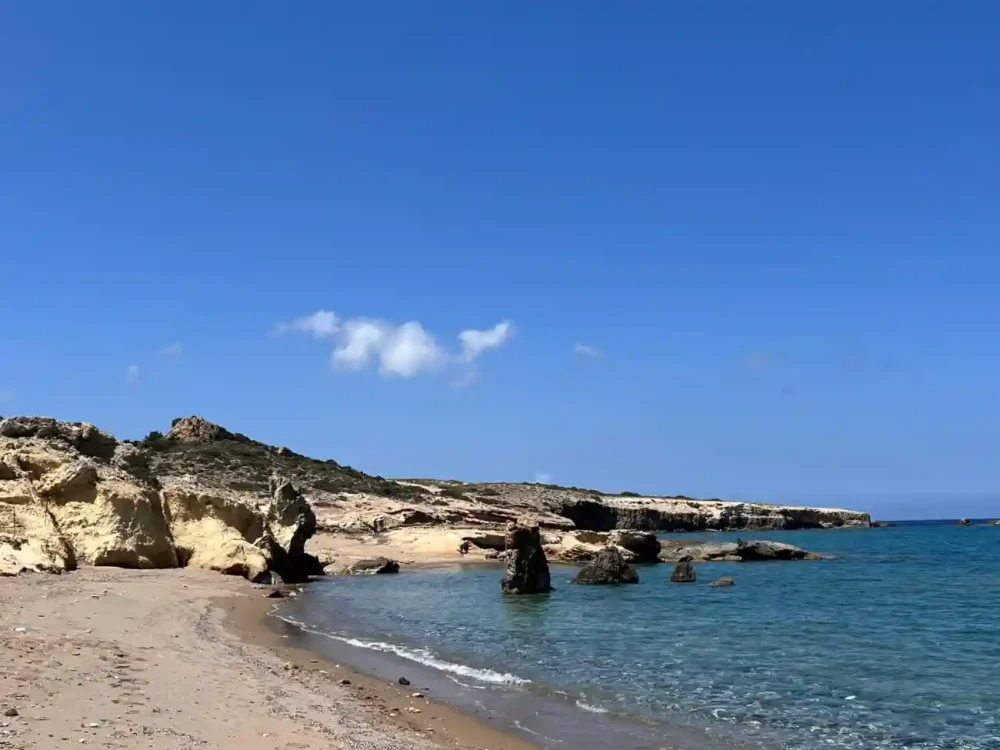
Milos is a rare gem among the Greek islands, where geological wonders, ancient history, and authentic Cycladic charm coexist in perfect harmony. Whether you’re sailing through sea caves, discovering ancient ruins, feasting on local delicacies, or simply watching the sun dip behind white cliffs, Milos invites you to slow down and savor every moment.
With its rich cultural tapestry, stunning natural beauty, and laid-back vibe, this isn’t just a destination—it’s a feeling. One that lingers long after the journey ends.
Ready to discover the magic of Milos? Let the island’s raw beauty and soulful simplicity redefine your idea of a perfect getaway.
Need Help Choosing the Right Yacht?
Let our experts match you with the perfect option based on your preferences and budget.
-
ESPERANCE
€22,000 – €31,500 Per week Greece -
ALTEYA
€49,000 – €69,000 Per week Greece -
RARE DIAMOND
€80,000 – €90,000 Per week Greece -
RINI V
€90,000 – €100,000 Per week Greece + 1 others -
LADY G II
€135,000 – €155,000 Per week Greece -
SERENITY
€34,900 – €48,000 Per week Greece -
ChristAl MiO
€34,000 – €47,000 Per week Greece -
DREAM
€19,000 – €22,000 Per week Greece -
LADY M
€30,000 – €39,500 Per week Greece
-
A stay of 3 to 4 full days is recommended to explore Milos thoroughly. This duration allows visitors to enjoy the island’s beaches, villages, and historical sites without feeling rushed.
-
Milos is generally more affordable than other popular Greek islands like Santorini or Mykonos. While prices can vary, especially during peak tourist seasons, many travelers find Milos to offer good value for accommodation, dining, and activities
-
While both islands are volcanic and part of the Cyclades, Milos offers a more tranquil and less commercialized experience compared to Santorini. Milos is celebrated for its diverse beaches and natural beauty, whereas Santorini is famed for its caldera views and vibrant nightlife. Travelers seeking a peaceful retreat often prefer Milos.
-
Milos is renowned for its stunning volcanic landscapes, over 70 diverse beaches, and the discovery site of the Venus de Milo statue. The island boasts colorful rock formations, crystal-clear waters, and picturesque fishing villages like Klima and Mandrakia. Its unique geological features and serene ambiance make it a standout destination in the Cyclades.
-
Top activities in Milos include:
-
Exploring unique beaches such as Sarakiniko and Kleftiko.
-
Visiting traditional fishing villages like Klima.
-
Taking boat tours to discover sea caves and secluded coves.
-
Enjoying local cuisine and fresh seafood at seaside tavernas.
-
Watching sunsets from Plaka Castle.
-
-
Milos is famous for its fresh, locally-sourced dishes, including:
-
Ladenia: Cycladic-style flatbread with tomatoes, olives, and herbs.
-
Kalamari Gemisto: Stuffed squid.
-
Baked Octopus: A local seafood specialty.
-
Moussaka: A Greek classic with eggplant and minced meat.
-
Karpouzopita: Watermelon pie, unique to Milos.
-
Xinomizithra and Manoura: Traditional local cheeses.
The island’s seafood, including fresh fish and lobster, is also a must-try.
-
